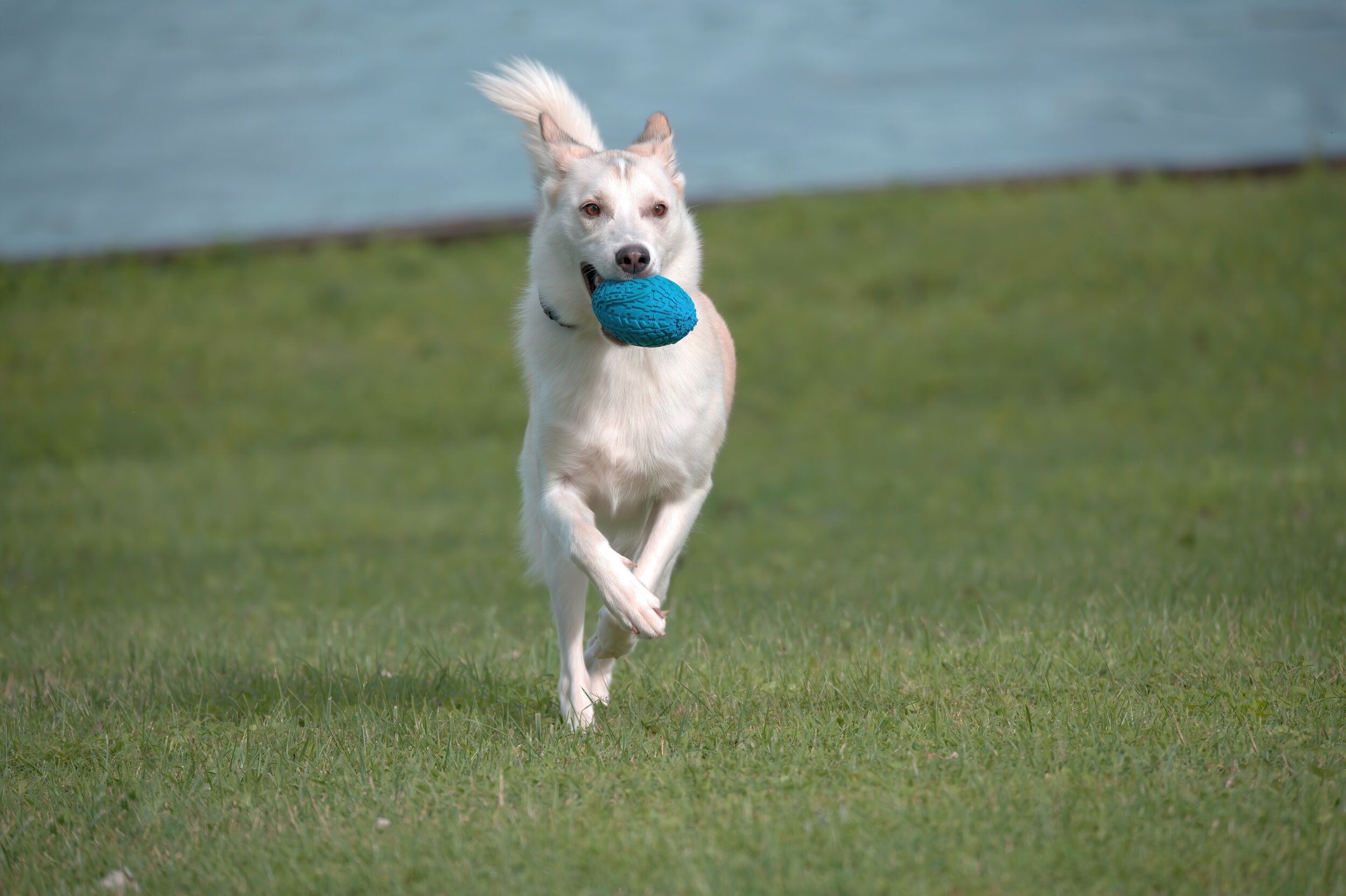Four years ago, I closed down my own little digital creative agency.
Pausing almost exactly at the midpoint in my working life, the timing felt meaningful to me. I wanted a job where my experience would make a contribution, but I still had more to learn. I needed a work home that would expose me to new ideas and processes. That place turned out to be Slide.
I’m sure there’s a joke in here somewhere about old dogs and new tricks.
Photo by Richard Peters on Unsplash
Before Slide, I had done interaction and graphic design, marketing strategy, writing, even some light web development. In that same time, I watched user experience (UX) bloom into a fully formed industry with specializations and sub-industries that I hadn’t yet experienced fully. I saw Slide as my ticket to picking up those skills I missed or neglected so far.
Here are the four areas where I’ve been able to improve thanks to my four years at Slide.
1. Product design experience
I did have product design experience before Slide, but I had even more marketing communications experience. I had product design FOMO. If you believe UX-Twitter (cool kids in the bay area), product UX is the “pure” practice of UX — design focused on user intent and utility, uncomplicated by anything as boorish selling. If marketing and advertising drive the teeming marketplace, product design is the ivory tower rising above. Right?
Four years of Sliderdom have given me the product design experience I was looking for. I’ve contributed to scrappy consumer brands and laser-focused enterprise tools alike. But I’ve also been reminded along the way that utility and selling are not either/or for real products in the real world. I’m glad I’ve become more comfortable shifting between enabling and influencing in one experience, the way real commercial products work.
2. Research experience
Before Slide I held a great appreciation for the outcomes of research, but no experience conducting research. That felt like a major skills gap that would have limited me as a UX professional. Having learned my craft in the marketing communication side, I was accustomed to thinking the CMO was the only customer that mattered. Best practices, thoughtful rationale, and a great “pitch” offer comfortable substitutes for real user data, but they aren’t good enough for our evidence-based industry today.
Photo by Sarah Brown on Unsplash
Towards this goal, I’ve recently completed the first research project where I was an active do-er in all steps, from recruiting to interviewing to writing the final analysis. Thanks to experienced coworkers and Slide’s thoughtfully crafted operations manual, I felt cautious but supported during my steep learning climb. Bursting my designer bubble and getting close to customers was the thrill and perspective I was craving to become a better designer.
3. Process
I had developed some unproductive beliefs about how work gets done. Primarily, I internalized the idea that the design process is magic and must be allowed to find its own natural path on its own time. I time-shifted (procrastinated) and reshuffled responsibilities based on my level of inspiration from day-to-day. The outcome is that I was always at work, but never quite done.
At Slide, we work a regular workweek, but we really work during those hours. We put in the effort to build project plans and break activities into their component parts. We do those activities when we say we’re going to do them and then we go home to our lives. The result: buckling down and knocking out deliverables on a schedule hasn’t hurt the work product at all. It turns out inspiration isn’t as powerful as simply having a habit.
4. Learning to accept help
During my early marketing and advertising career, I became indoctrinated with the myth of the creative rock star — that clutch performer who sacrifices health and wellbeing to pull design gems from the ether. I aspired to that role and emulated those workaholic behaviors modeled for me. When I started to feel burnout approach, I knew I needed another way.
When I joined Slide, I joined a true team that supports and complements one another. Thanks to a culture of helping, well-documented practices (see #2), and precise planning (see #3), every Slider has a part to play and depends on other Sliders to deliver too. The outcome is that things get done beautifully without the proverbial “heavy lift.” I no longer associate suffering with a quality work product. Plus, I enjoy seeing every Slider take their opportunity to surprise and delight clients and customers, whether they have 2 or 20 years of experience.
Photo by Tony Trocino on Unsplash
5. And beyond
Of course, items one through four will need constant tending, but I’m already thinking about what new capacities I’ll need to add in the coming years. Technical evolutions like Ambient UI, Artificial Intelligence, and changing fashions in visual design will naturally push and pull on my day-to-day work life. Other softer skills come to mind, too.
One thing I think about more lately is developing a vision for an industry that isn’t exactly young anymore (neither am I). I expect my biggest challenge in the future will be loosening my grip on the design process so young talent can let their ideas and energy shape outcomes I would never have dreamed of. Now that Slide has a staff of 19 (that’s a lot for us), I see the opportunities already.
Title photo by Wolfgang Hasselmann on Unsplash




